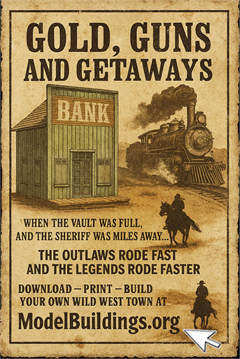Everything on model trains, model railroads, model railways, locomotives, model train layouts, scenery, wiring, DCC and more. Enjoy the world's best hobby... model railroading!
HO Cars Derailing
Richard asks readers for advice:
“I am building a Woodland Scenics River Pass layout, and I’m at the point where I need to lay track inside the tunnels and cover the tunnels. I am using the Atlas track kit that is designed for the layout, and a number of the cars derail at the switches. I have replaced some of the wheels on the cars, and that doesn’t help. Any suggestions would be greatly appreciated.”
To advise Richard, simply click on the BLUE title of his posting and add your answer. You don’t need to register or anything like that. Simply add your suggestion.
5 Responses to HO Cars Derailing
Leave a Reply















Try putting a weight (load) in the cars
I concur with Don’s comment. Additionally if you have an NMRA track gauge check the Atlas switches for proper gauge. This is especially true in the area of the frog and guard rails. If the gauge is either to wide or too narrow derailments can occur easily. Light filing of the guard rail if too narrow or using .001 styrene filler if too wide. Also check the switch points. You need to slightly file the points so that they are level with the rail head (If the points are too high that will tend to cause cars to derail.)
Try checking the “air hose”under the coupler to see if they are hanging too low. Use a coupler height gauge. Often the coupler hangs down a bit and the “hose” hangs up on the switch frog or rails and derails the cat. You can fix this by bending the “hose” up just a hair or two.
Check also the rail couplers. With some turnouts there is no space allowance to push the metal coupler in and so you might miss, resulting in an uneven joint. I test my switches by letting a cheap, light caboose or other rail car run through the turnouts without intervention (ie I don’t touch the car). If it makes it through, it’s a good turnout. If it derails, then I push it through slowly to see where the problem can be. I also once found the turnout not completely in a closed position because of a very slight bend at the pointy end of the turnout entrance. When I ran a car through I could see the wheel going between the two pieces and jamming up.
hi. i have run a mix of budget and higher end track and stock. i have seen this problem on the HO layout i did recently for my son. to the point, the track hieght (depth to plastic base) on frogs and switches is less than the flange of many wheels. best case is rough spot, worst is jumping trucks off of track. new and old cars i update to new type couplers and nickle wheeled trucks. so that string of cars is close as possible to even running heights. finally had to cut in a slight groove to the inside of rail with a dremel tool and carbide disc. slow and easy till wheels cleared well and smooth/straight. im sure there is some variance in the trucks/wheels made over the years, and possible that a way of trimming the wheel flange could be done by those of more mechanical skill. on my N-scale its all about looks and details much less actual run time. for the youngster, its about running reliable, and exacting detail is much less a concern. my best to ya!